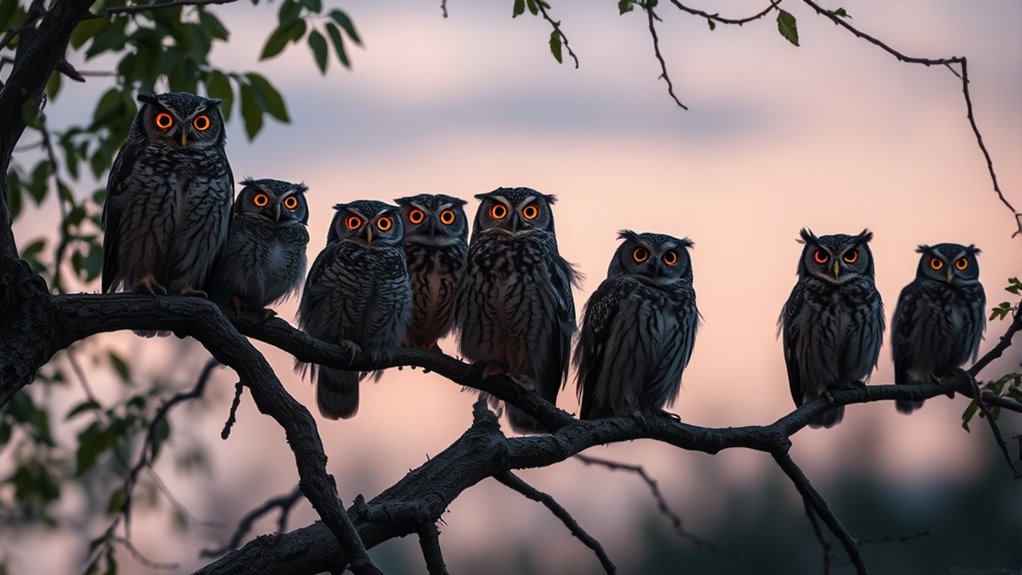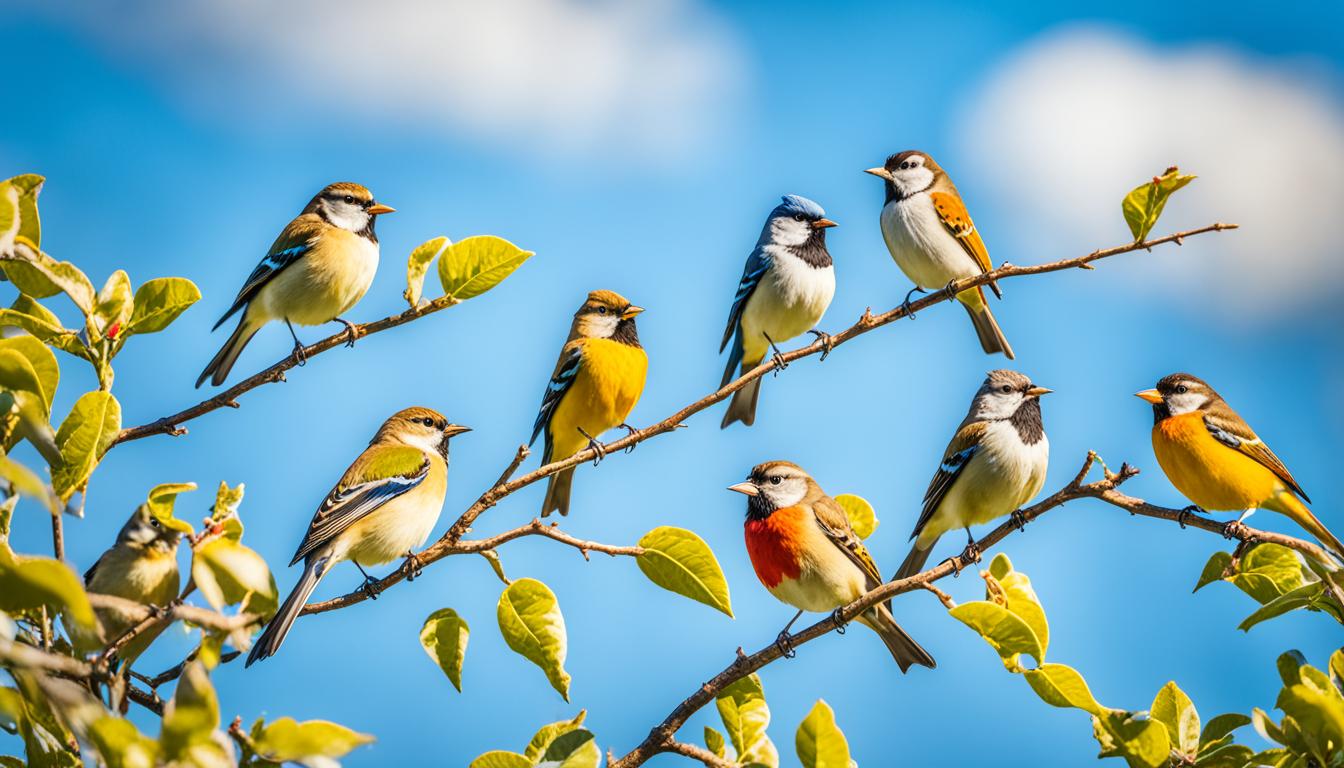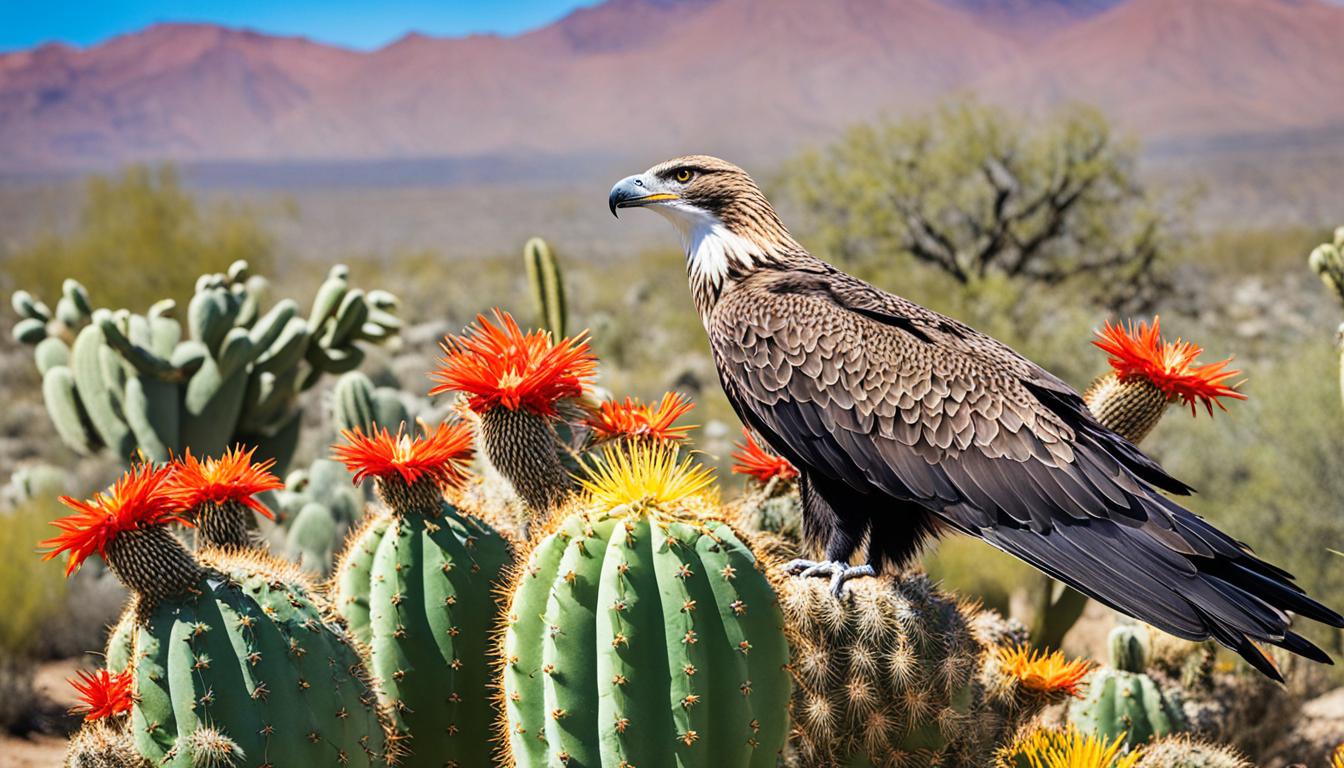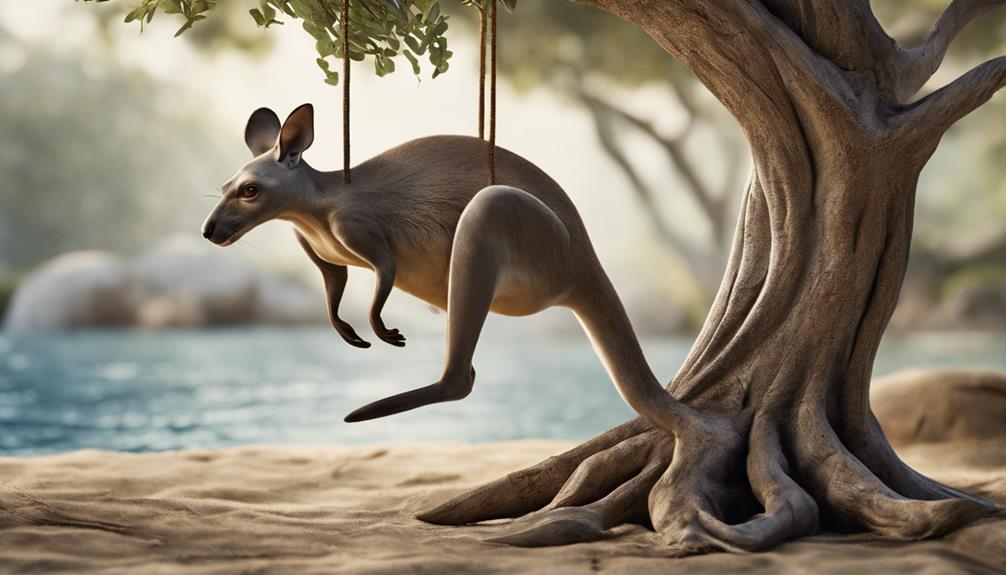A group of owls is called a “parliament.” This term reflects their intriguing social dynamics and the way they gather together, even though owls are often seen as solitary creatures. The “parliament” highlights their unique interactions and behaviors. They communicate through vocalizations, especially during mating season, which adds to their fascinating social structure. If you’re curious about their hunting habits or ecological roles, there’s plenty more to discover about these amazing birds.
Key Takeaways
- A group of owls is called a “parliament,” reflecting their social behaviors and gatherings.
- The term “parliament” emphasizes the intriguing social structure of owls, despite their often solitary nature.
- Owls exhibit social interactions, especially during mating season when they are more vocal and communicative.
- Different owl species may gather in groups, enhancing their hunting and social dynamics.
- Observing a “parliament” of owls can provide insight into their fascinating behaviors and ecological roles.

Have you ever wondered what a group of owls is called? The answer might surprise you. While you might think of owls as solitary creatures, they actually come together in groups, known as a “parliament.” This term reflects not only their intriguing social dynamics but also the wisdom often attributed to these nocturnal birds. As you explore the fascinating world of owls, you’ll find that understanding their behavior and habitats can deepen your appreciation for these remarkable creatures.
Owls exhibit various behaviors that are vital for their survival. They possess remarkable hunting skills, often relying on their acute hearing and exceptional eyesight to locate prey in the dark. When you observe owls in their natural habitats, you’ll notice they tend to be more active during twilight hours, a behavior known as crepuscular activity. This timing allows them to take advantage of the low light conditions, making it easier to hunt.
In terms of social interaction, owls can be quite vocal, especially during mating season. Their hoots and calls serve as communication tools, helping to establish territory or attract a mate. If you find yourself in an area where owls are present, listening to their calls can be a mesmerizing experience. It’s important to keep in mind that different species have unique vocalizations, which can reveal much about their habits and social structures.
Owls adapt well to various habitats, including forests, grasslands, and even urban areas. You might be surprised to learn that different species prefer different environments. For instance, the Great Horned Owl often resides in wooded areas, while the Barn Owl is more likely to be found in open fields or farmland. Exploring these habitats can provide you with a unique opportunity to witness owl behavior firsthand.
Understanding owl habitats also helps you appreciate their role in the ecosystem. They serve as vital predators, helping to control populations of rodents and other small mammals. By maintaining a balanced ecosystem, owls play an important part in biodiversity. Additionally, their significant role in controlling rodent populations demonstrates their importance in maintaining ecological balance.
Frequently Asked Questions
Do Owls Prefer to Live in Groups or Alone?
Owls generally prefer to live alone rather than in groups. Their social behavior tends to be solitary, especially during nesting habits. You’ll often find them roosting alone in trees or hidden spots, as they’re more focused on hunting and maintaining territory. While some species may tolerate others nearby, they usually don’t form tight-knit groups. So, if you’re hoping to see a gathering of owls, you might be disappointed.
What Do You Call a Baby Owl?
You call a baby owl a “fledgling” or “owlet.” When you think about owl feather symbolism, it’s fascinating how these young ones embody wisdom yet to be discovered. As they grow, they often follow their parents, learning about owl migration patterns. Imagine the journey ahead, filled with mystery and adventure. Each owlet carries the potential to become a wise guardian of the night, just waiting to spread its wings and soar.
How Many Species of Owls Are There?
There are over 200 species of owls worldwide. Each species carries its unique traits and adaptations, reflecting the importance of owl conservation efforts to protect their habitats. In many cultures, owls symbolize wisdom and mystery, often inspiring awe and reverence. By learning about these fascinating creatures, you can appreciate their role in nature and contribute to their conservation, ensuring future generations can admire their beauty and significance.
What Do Owls Eat in the Wild?
Owls eat small mammals, birds, insects, and sometimes reptiles. You’ll find that their hunting techniques are incredibly varied; they can silently swoop down on prey or use their excellent night vision to spot movement. Regarding habitat preferences, owls thrive in forests, grasslands, and deserts, adapting their hunting methods to suit the environment. With keen senses and stealth, they efficiently secure food, making them fascinating predators in the wild.
Are Owls Nocturnal or Diurnal Animals?
Owls are primarily nocturnal animals, meaning they’re most active at night. This adaptation helps them hunt and communicate effectively in the dark, using calls and sounds to communicate with each other. While some owls may migrate, their migration patterns vary widely among species. Those that do migrate often rely on their keen senses and nocturnal habits to navigate, ensuring they find food and suitable habitats during their travels.
Conclusion
So, next time you spot a gathering of owls, remember that it’s called a “parliament.” Imagine wandering through a quiet forest at dusk and stumbling upon a parliament of owls, their big eyes glowing in the twilight as they silently observe you. This enchanting scene highlights not only the beauty of these creatures but also the importance of respecting their habitat. Keep an eye out, and who knows what fascinating wildlife encounters await you!










